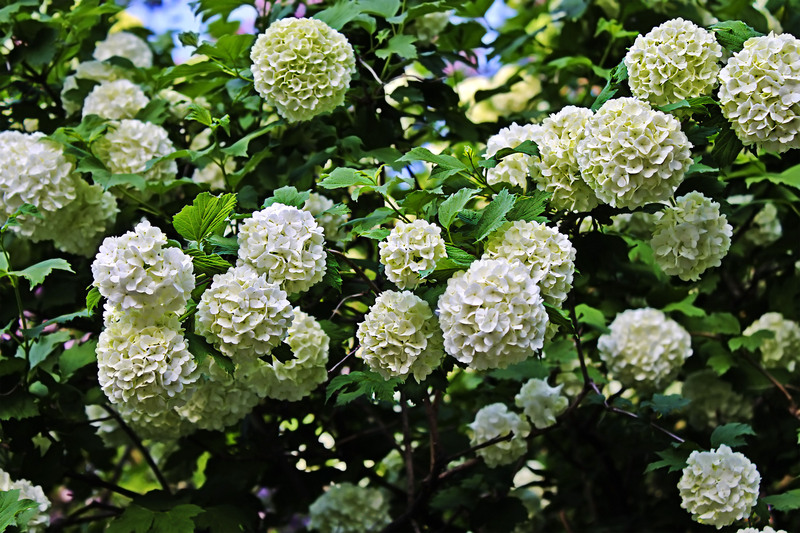How to Build a Kid-Oriented Garden of Fun
Posted on 19/06/2025
How to Build a Kid-Oriented Garden of Fun
Are you looking to transform your backyard into a vibrant, inspiring, and interactive oasis for your children? Building a kid-oriented garden of fun is an exciting project that promises hours of enjoyment, promotes healthy habits, and fosters a love for nature in your little ones. This comprehensive guide will show you how to design, create, and maintain a family-friendly garden where kids can play, learn, and thrive.
Why Create a Kid-Friendly Garden?
Children's gardens aren't just for entertainment--they're spaces where learning meets play. Outdoor play is essential for cognitive, emotional, and physical development. By designing a kid-centric gardening area, parents and caregivers encourage children to:
- Develop a connection with nature
- Learn about plant life cycles and ecology
- Enhance fine and gross motor skills
- Boost creativity through imaginative play
- Enjoy more outdoor physical activity
- Bond as a family through shared gardening tasks

Planning Your Children's Garden of Fun
Before you dig, it's crucial to plan your child-focused outdoor space thoughtfully. A successful garden for kids is safe, interactive, and easy for young hands to explore. Here's what to consider:
1. Location and Size
Pick a sunny, easily visible spot that's large enough for adventurous exploration but small enough for easy supervision. Ideally, it should be close to the house for convenience.
2. Safety First
Safety is essential in a children's garden. Be sure to:
- Choose non-toxic, sturdy plants
- Keep walkways even and free from obstacles
- Fence off water features or install covers
- Store tools and chemicals securely out of reach
- Provide shaded areas to prevent sunburn
3. Involve Your Kids in the Design
Let children be part of the planning process. Ask for their favorite colors, flowers, or garden features. They'll be more invested if the garden reflects their personality and interests.
Features of a Kid-Oriented Fun Garden
Ready to ignite your imagination? Here are core elements and creative ideas to ensure your kid-oriented garden is lively, educational, and endlessly entertaining.
1. Sensory Zones
Sensory play is vital for early development. Incorporate plants and features that engage all five senses:
- Sight: Vibrant flowers, rainbow-colored beds, and bright garden art
- Smell: Fragrant herbs like lavender, mint, and basil
- Touch: Soft lamb's ear plants, smooth stones, and sandboxes
- Taste: An edible patch with berries, cherry tomatoes, or sugar peas
- Sound: Ornamental grasses, wind chimes, and water features
2. Edible Planting Patches
There's magic in tasting something you've grown yourself. Dedicate a section for easy-to-grow, child-friendly edibles:
- Strawberries
- Blueberries
- Sunflowers (for seed snacks)
- Snap peas
- Carrots
- Lettuce (inable for making salads)
Not only will kids love harvesting snacks, but they'll also learn about healthy eating and plant life cycles.
3. Play Structures and Creative Nooks
Blend play equipment seamlessly with your greenery for a true fun garden:
- Teepees or tents: For reading and imaginative play
- Willow tunnels or living forts
- Climbing frames
- Tree stumps for hopping
- Balance beams
- DIY obstacle courses made from logs, stones, and mulch
4. Water Play Zones
Bring in elements that cool and fascinate. Try:
- Mini splash pads or shallow water tables
- Stepping stones across shallow ponds (add fish for fascination!)
- Mud kitchens for nature-inspired culinary play
- Hand pumps or bamboo water races
Always supervise and ensure water elements are safe and age-appropriate.
5. Wildlife Havens
Teaching children to care for wildlife enriches their connection to nature. Add:
- Butterfly and bee-friendly flowers
- Birdhouses and feeders
- "Bug hotels" crafted from twigs, bricks, and pinecones
- A frog pond, if you have space
6. Art and Creativity Stations
Dedicate a corner to outdoor arts and crafts where soil meets imagination.
- Easel and washable paints
- Nature weaving frames
- Outdoor chalkboard walls
- Stone or log carving tools (for older children, under supervision)
Choosing the Best Plants for Your Kid-Oriented Garden
Select plants that complement your region, are non-toxic, and excite youngsters. Opt for:
1. Fast-Growing Seeds
Children are naturally impatient! Sunflowers, radishes, pumpkins, and peas yield quick, visible results.
2. Touch-Friendly Selections
- Lamb's ear (soft and furry)
- Grasses with fluffy seed heads
- Basil and mint (nice for rubbing and sniffing)
3. Safe Flower Choices
- Pansies
- Marigolds
- Nasturtiums (edible flowers with a peppery bite!)
- Snapdragons
4. Color and Movement
Choose plants of varying heights and colors, especially wind-blown varieties like ornamental grasses, to enliven the view.
Creative Garden Projects for Children
Make your kids' gardening experience even more exciting with these engaging, hands-on projects:
- Painted Stones: Brightly paint rocks as ladybugs, bees, or name markers for plants.
- Fairy or Dinosaur Gardens: Craft miniature magical lands using small figures, twigs, moss, and pebbles.
- DIY wind chimes: Use shells, beads, and recycled materials for soothing garden music.
- Plant Scavenger Hunts: Hide clues or natural items for kids to find as they explore.
- Garden Journals: Have children document plant growth with drawings, measurements, and pressed flowers.
Design Tips for a Kid-Oriented Play and Learning Space
Ensure your fun children's garden is enjoyable year-round. Keep the following in mind:
- Curved paths: More interesting than straight lines and increase a sense of adventure.
- Hiding nooks: Spaces behind shrubs or in "secret" corners spark imaginative play.
- Moveable elements: Use loose parts like logs, sticks, or stones for building and creative play.
- Accessible beds: Raised or border beds allow small children to reach plants easily.
Encouraging Your Kids to Engage
A kid-focused garden is only fun if children want to use it! Here's how to keep them engaged:
- Let them choose seeds or plants to grow
- Assign "ownership" of a bed, pot, or area
- Set up a watering schedule they manage
- Share garden successes--and failures--to foster resilience
- Celebrate harvests with cooking or crafting sessions
Balancing Structure and Freedom
While guidance keeps the garden safe, allow plenty of freedom for kids to invent their own games and discoveries. A child's garden should feel like their own domain--full of surprise and possibility.
Maintaining a Kid-Oriented Garden of Fun
Make maintenance a family routine! Assign age-appropriate, enjoyable tasks:
- Sowing seeds
- Watering (give them their own colorful watering cans!)
- Weeding small sections
- Harvesting produce
- Filling up feeders or bug hotels
Use positive reinforcement--praise, garden "badges," or weekly garden picnics can motivate kids to participate.

Final Thoughts on Building an Amazing Kid-Centered Garden
A kid-oriented garden of fun is more than a play area--it's a gateway to learning, nature, and family memories. With creative planning and ongoing engagement, it will be a cherished part of your home for years to come. Start small, involve your children at every step, and watch your backyard turn into a magical, adventure-filled world!
Ready to get started? Roll up your sleeves, invite the kids outside, and begin designing your own outdoor family paradise today!
Frequently Asked Questions about Kid-Friendly Gardens
- What is the best age to introduce kids to gardening?
Children as young as 2 or 3 can help with simple tasks! Older kids enjoy more complex projects. - Is it easy to maintain a children's garden?
Yes. Choose low-maintenance plants and simple features to keep the garden carefree and enjoyable for everyone. - How do I make a garden safe for kids?
Avoid toxic plants, ensure secure fencing, supervise water areas, and use child-friendly tools.
Build your kid-friendly backyard garden today, and inspire a lifelong love of nature in your children!



